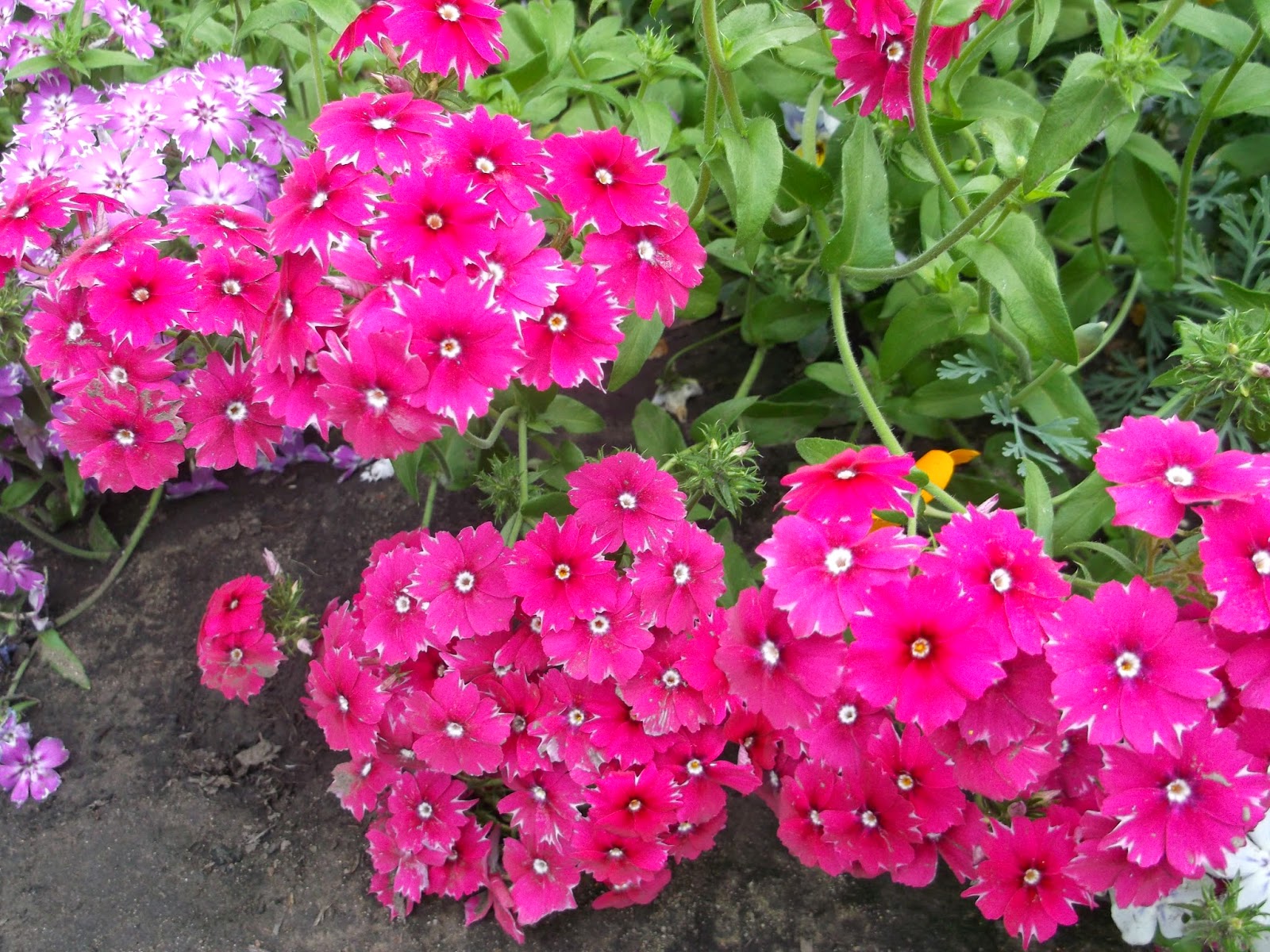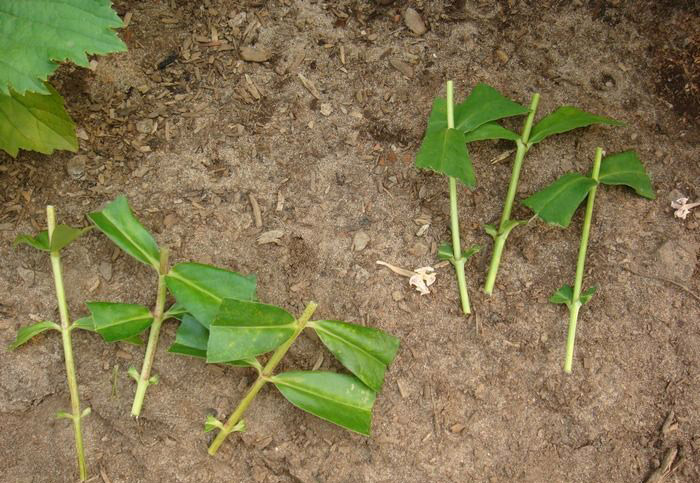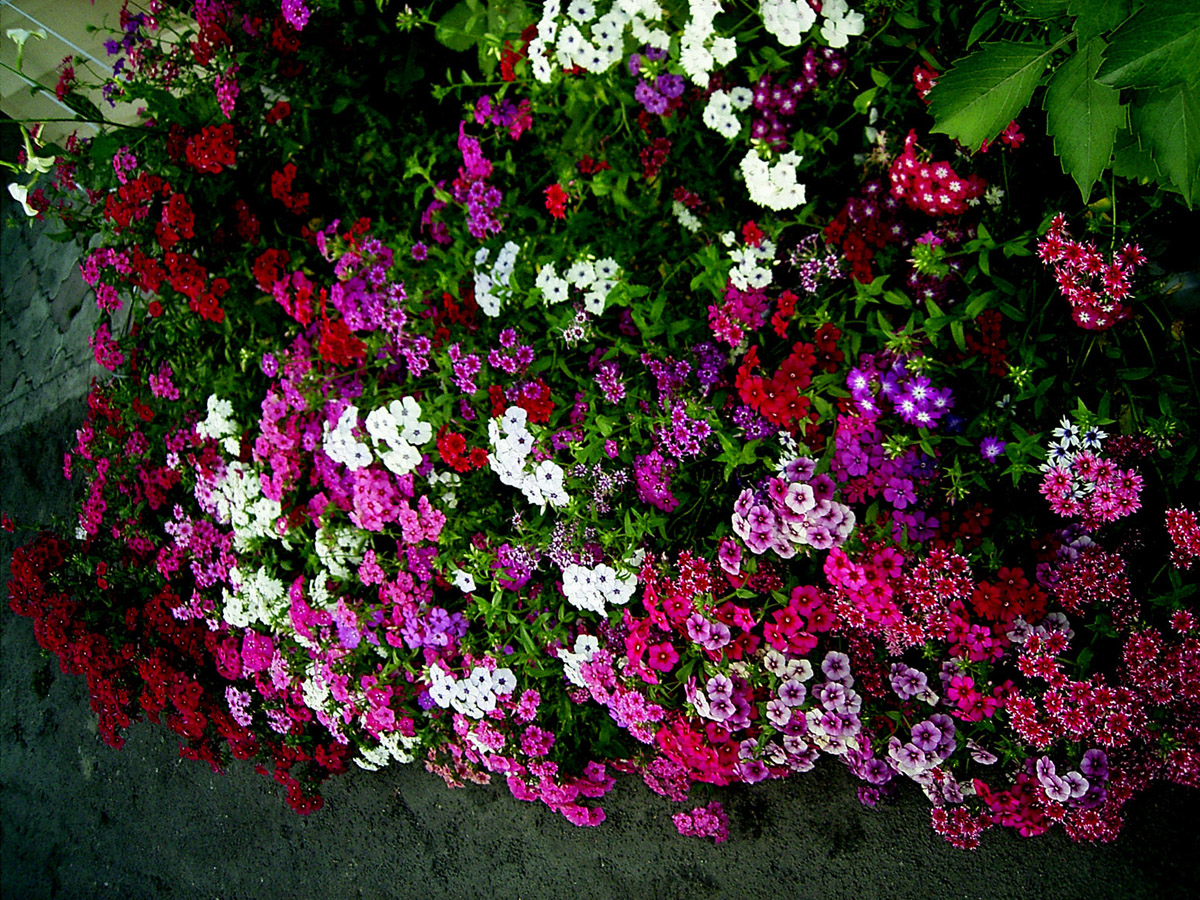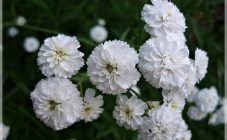Content:
Fragrant phlox annuals fill the garden with a delicate aroma. These ornamental plants are versatile, unpretentious, which makes them suitable for growing in the areas of gardeners and summer residents.
This article contains information about the peculiarities of culture, external characteristics. After reading to the end, you can find out when to plant and grow an annual phlox from seeds, what other planting methods exist, and also about the conditions necessary for this.
Agrotechnics of culture
Annuals do not require any special growing conditions, unlike phlox perennials. Previously, planting seeds in open ground was considered a thankless task, since the seeds did not want to germinate in any way.
This is because the seeds are large enough, have a dense outer shell. Therefore, there was an opinion that they need to be buried to a depth of 0.3 m. In fact, it is necessary to plant them on the soil surface, sprinkling them with earth a little, since the plant loves sunlight and moisture.
Do not plant in cold ground. It should warm up to 11 degrees Celsius at a depth of 0.7 m. The air temperature at the time of disembarkation is at least 20 degrees Celsius. Watering is required regular, abundant.
Reproduction of culture
There are 2 ways to plant an annual phlox:
- Growing seedlings.
- Planting seeds in open ground.
Reproduction by seedlings
It is used if it is necessary to get guaranteed flowering this season. To do this, in mid-May, seeds are sown in boxes on the surface, lightly sprinkled with earth. After sowing, the container is covered with foil, placed in a warm and dark place. Every day it is necessary to remove the film for 2-3 hours, water when the soil dries.
The first shoots will appear in a week. The shoots are moved to a warm place, where the sun's rays fall, once fertilized with liquid nitrogen. With the onset of warmth (about mid-April), the box is put outside for 2-3 hours every day.
Planting seeds in open ground
This method is more popular because it allows you to get healthy, profusely blooming flowers at a low cost. There is even an opinion that annual phloxes can only be grown by seed.
Landing conditions:
- The main requirement is the ability to water abundantly. It should be a level area with a slight slope. Places under the crown of trees are not suitable.
- You can plant seedlings both in an open area and in partial shade. The best place would be under the protection of shrubs and small trees with shade during hot hours.
- In Siberia, the northern regions of Russia with a cold climate, phloxes are placed in areas protected from cold winds (next to hedges, medium-sized plants).
- The flower garden is arranged in the east, west side of the house. Plants feel worst of all near the northern wall, in the shade of coniferous trees.
Soil composition and fertilization
The soil for spring planting is prepared in the fall. Dig up the earth, add 1 liter of organic matter per m², add bone meal, ash 150 g each, and also superphosphate - 60 g. Lime is added to the acidic soil.
In the spring, before planting, the soil is dug up, filled with leaf humus and a substrate, which is made up of peat, humus, sand, turf in equal amounts. 2 days before planting, the soil is watered abundantly.
Instructions for planting seeds in open ground
Sowing seeds is carried out around the beginning of May, when the soil is well warmed up, it is warm outside.
During the day, gardeners make small holes (2-3 cm deep) at a distance of 15 cm from each other. 3-5 seeds are laid in each, sprinkled with earth. After planting, the soil is slightly moistened with a puller. Moisten the soil every 2-3 days.
Culture care
Annual phloxes require compliance with all care conditions in order to obtain large inflorescences. If you violate the technology, you can destroy the plant.
Watering
An adult plant is watered 3-4 times a week.
How to care for the soil
At least once a week, the soil is loosened at a shallow depth so as not to damage the roots of the plant. Before flowering, it is recommended to make foliage humus, which is collected at the end of autumn from the site.
Plant feeding
Beautiful and lush annual phloxes cannot be grown without feeding. As soon as the plant sprouts, it is fertilized with nitrogen fertilizers, after a week 30 g of ammonium nitrate, 40 g of wood ash and sulphate of about 20 g are added.
In the second half of May, a tincture of mullein and chicken droppings is made in proportions of 1: 2.
During the budding period, organic fertilizer is applied from 20 g of ash.
When flowering begins, top dressing is given in the form of mineral fertilizer - 20 g in dry form.
Bloom
Almost all varieties of annual phlox bloom almost the entire season, some even before the onset of frost. Experienced gardeners choose several types of consistently flowering varieties for the site.
The flowering period begins in mid-May. During this period, it is necessary to provide the plant with constant moisture, loosening 2 times a week, feeding.
Why does not the plant bloom
It often happens that the flowering period of phlox should have begun long ago, but the formation of buds does not occur. Possible reasons:
- Lighting - Plants do not receive enough light, so they develop more slowly.
- The composition of the soil does not have enough fertilizer.
- Phloxes do not receive an abundant amount of moisture or, on the contrary, they are overmoistened.
- Not enough space for plant development. It often happens when phlox is planted in a small flowerpot, a small flower bed.
Diseases and pests
Phlox can rarely get sick:
- Curly - the leaves are modified, the stems are deformed, reduced.
- Variegated - the appearance of white stripes on flowers.
- Rust - brown spots appear on the plant. The affected fate wither away over time.
Treatment:
- All infected areas are removed.
- They are treated with pharmaceutical preparations: fungicides, colloidal sulfur solution, trichodermine.
If the culture curls up and dries up, then this is a sign of the location of the slobbering penny. It looks like saliva.
Plant neighbors
When choosing a neighbor for an annual phlox, take into account the flowering season, as well as the peculiarities of the flowers:
- Combinations of a plant with a delphinium, lily, oriental poppy or lupins look advantageous.
- Spring phloxes are used to decorate borders, so dwarf irises can become their neighbors.
- For the combination, take plants that bloom in a different period. They often use dwarf wormwood, chitose, and chickweed.
- In the autumn, phloxes look good with spireas, barberries.
- In summer, undersized bells, geraniums, highlander, and herbal carnation will be an excellent addition.
- Gardeners often choose the option of placing flowers with snowdrops, crocuses among decorative stones.
Autumn care
At the end of autumn, after the end of flowering, the plant is recommended to be cut. There are 2 schemes for this:
- The ground part is cut off at a height of 2-3 cm from the ground. After removing the stem, the risk of infection with diseases, insect and pest damage disappears.
- The stems are cut, leaving 10 cm of hemp. Young shoots develop from the remaining buds in spring. In practice, they grow much worse than from the root.
If you plan to plant phlox next spring, then collect seeds.
After pruning, organic waste is raked up and then burned.
Preparing for winter
To protect the buds from possible frost, the plant must be covered.
Annual phlox treated in spring are covered with a 10 cm layer of peat, compost or humus. To insulate one plant, about 1 bucket of mulching material is scattered around its perimeter. The mulch is covered with spruce branches.
The shelter is removed in the spring in warm weather, when the risk of a cold snap disappears.
Correct planting technology and competent care are the key to successful cultivation of annual phlox on the site. Elegant, lush flowers will favorably accept care, becoming the main attraction of the garden of summer residents and gardeners, delighting the eyes of visitors and households.
















